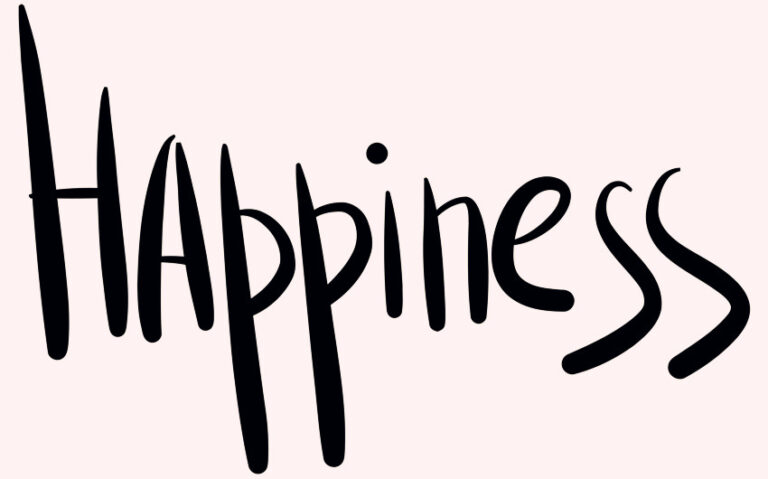The Quiet Power of Naming Your Feelings: Why Emotional Clarity Changes Everything
You’ve been told to stay strong, hold it together, and keep going. But what if your strength is hiding in something much quieter—something as simple and powerful as saying, “I feel sad” or “I feel overwhelmed”? Naming your feelings won’t make them disappear, but it will change your relationship with them. And that changes everything.
Naming your feelings helps regulate your nervous system
When an emotion shows up, your nervous system reacts—often before your mind even registers what’s going on. Your heart rate might spike, your muscles tense, your breath shortens. This is your body responding to an unspoken message: something feels off, unsafe, or overwhelming.
But research shows that simply naming your emotion—known as “affect labeling”—can calm your brain’s threat response. By saying, “I feel anxious” or “I’m scared,” you shift activity from the emotional centers of the brain (like the amygdala) to regions responsible for logic and language (like the prefrontal cortex). In plain terms: your body begins to calm down because your brain feels more in control.
Think of naming as anchoring. It’s the difference between being swept away by a storm and saying, “There’s a storm, and I see it.” You still feel it, but now you’re not consumed by it. You’re grounded enough to ride it through.
Unspoken emotions turn into symptoms, not solutions
When you don’t name a feeling, it doesn’t vanish—it morphs. Emotional energy has to go somewhere. If it’s not expressed directly, it gets expressed indirectly: through chronic stress, irritability, body aches, sleep problems, or self-sabotaging behavior.
For example:
- Unexpressed sadness might show up as fatigue or withdrawal.
- Unnamed anger might turn into passive-aggressive comments or tension headaches.
- Buried anxiety might lead to over-planning, micromanaging, or emotional numbness.
Your emotional system is like a pressure valve. Naming a feeling releases the pressure before it builds into something destructive. It also gives you a moment of clarity—a pause—where you can respond with care instead of reacting on autopilot.
You were conditioned to avoid emotional language—but it’s your lifeline
If you struggle to name how you feel, you’re not broken—you were conditioned. Many girls grow up in homes where emotional expression is minimized or punished. You may have been told, “Stop crying,” “You’re too sensitive,” or “Calm down” before anyone asked, “What’s going on inside you?”
This emotional conditioning leads to avoidance. You learn to skip over feeling and jump straight into fixing, pleasing, or numbing. But when you can’t describe your emotional experience, you lose access to your inner world. You become disconnected from yourself—and more vulnerable to anxiety, burnout, and toxic relationships.
Rebuilding emotional language starts with practice. You begin by swapping vague responses like “I’m fine” for words that are true—even if they’re uncomfortable. The more often you say, “I feel disappointed,” “I feel invisible,” or “I feel tense,” the easier it becomes to live honestly.
Precision matters: specific emotions lead to specific healing
There’s a difference between saying “I feel bad” and saying “I feel ashamed because I made a mistake.” The second is more vulnerable, yes—but also more useful. Because once you know what you’re really feeling, you can choose a response that meets the actual need beneath it.
Here’s how naming more precisely helps:
- “I feel angry” → Ask: What boundary was crossed?
- “I feel rejected” → Ask: Where am I craving belonging?
- “I feel ashamed” → Ask: What part of me needs compassion right now?
This is how you move from emotion to healing. From confusion to clarity. From pain to action. When you name it clearly, you give yourself the gift of understanding.
Feelings are messengers, not threats
You’ve probably been told to be afraid of emotions—that sadness makes you weak, anger makes you dangerous, or fear makes you fragile. But emotions aren’t enemies. They’re messengers. Each one is trying to tell you something about your environment, your needs, or your values.
For example:
- Sadness often signals that you’ve lost something meaningful or that something needs to change.
- Anger points to injustice, misalignment, or a boundary being ignored.
- Guilt may reveal where your behavior and your values are out of sync—and what you want to repair.
When you avoid emotions, you miss their wisdom. But when you name them and listen, they often quiet down—because they’ve done their job. You don’t have to be ruled by your feelings. But you do need to hear them first.
Naming your feelings leads to emotional maturity—not emotional indulgence
Some people fear that focusing on emotions will make them self-absorbed or fragile. But the opposite is true. When you have a strong emotional vocabulary, you become more resilient—not less. You can ride the waves of emotion without drowning. You can notice what’s true without spiraling into shame or blame.
This skill—called emotional granularity—is what sets emotionally mature people apart. It means you can differentiate between irritation, resentment, and grief. You don’t just say “I’m upset.” You say “I’m frustrated because I don’t feel heard,” and now you can take action that reflects clarity instead of chaos.
The result? You communicate better. You set boundaries more easily. You stop blaming others for feelings you haven’t named yet. And you start relating to yourself with more honesty and grace.
Relationships thrive when emotional truths are spoken
Miscommunication often begins with unspoken emotions. When you don’t know what you’re feeling—or when you’re afraid to name it—you end up projecting, withdrawing, or expecting others to just “get it.” But nobody can read your mind. And people who care about you want to understand. You just have to show them how.
Try this:
- Instead of “You never listen,” try “I feel unheard when I’m interrupted.”
- Instead of silence, say “I’m struggling to talk about this because I feel vulnerable.”
- Instead of snapping, try “I’m overwhelmed and I need a break before we keep going.”
This kind of honesty takes practice. But it creates trust. It builds intimacy. It makes space for resolution instead of resentment. And it lets the people who love you show up for the real you—not just the edited version.
Emotional language helps you reclaim agency and make better choices
When you don’t know what you feel, you’re more likely to react impulsively or abandon yourself to please others. But when you can name your feelings, you pause. That pause creates space. And in that space, you gain agency—the ability to choose instead of just cope.
Let’s say you’re angry. If you don’t name it, you might lash out or shut down. But if you say, “I’m angry because I feel dismissed,” you now have options: Do you want to speak up? Set a boundary? Walk away? You’re no longer ruled by the feeling. You’re responding with clarity and intention.
Naming your feelings doesn’t mean wallowing—it means directing. It’s how you take ownership of your emotional life instead of letting it control you.
How to develop emotional fluency (even if you’ve never had the words)
It’s never too late to learn how to name your feelings. Here’s how you can start building emotional fluency, one small moment at a time:
1. Use a Feelings Wheel: This tool helps you identify nuanced emotions beyond “good” or “bad.” It’s especially useful if you feel something but can’t name it.
2. Track your emotions daily: Keep a small notebook or app where you write down three feelings each day and what triggered them. Over time, you’ll start seeing patterns—and needs.
3. Check in during transitions: Pause when you wake up, before meals, after a conversation, or before sleep. Ask: “What am I feeling right now?”
4. Speak it aloud: Even if no one else is around, practice saying: “I feel ____.” The goal is to normalize naming—not to fix or justify it.
5. Allow mixed emotions: You can feel relieved and sad. Grateful and resentful. Peaceful and uncertain. Emotions often travel in pairs—naming them doesn’t require you to choose just one.
Your emotions are not problems—they are portals to self-trust
Every time you name a feeling, you build self-trust. You prove to yourself that you can handle the truth of your own experience. That you can sit with discomfort without collapsing. That you can be honest without breaking. And that you don’t need to be afraid of what lives inside you.
This is how you reclaim your emotional space. Not with perfection, but with presence. Not with power plays, but with quiet words like “I feel lonely” or “I need comfort.” That is enough. That is brave. And that is where healing begins.






